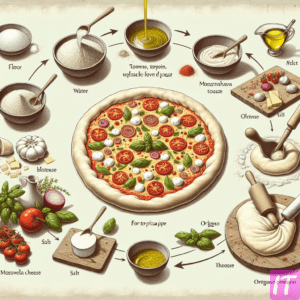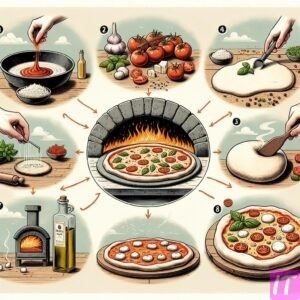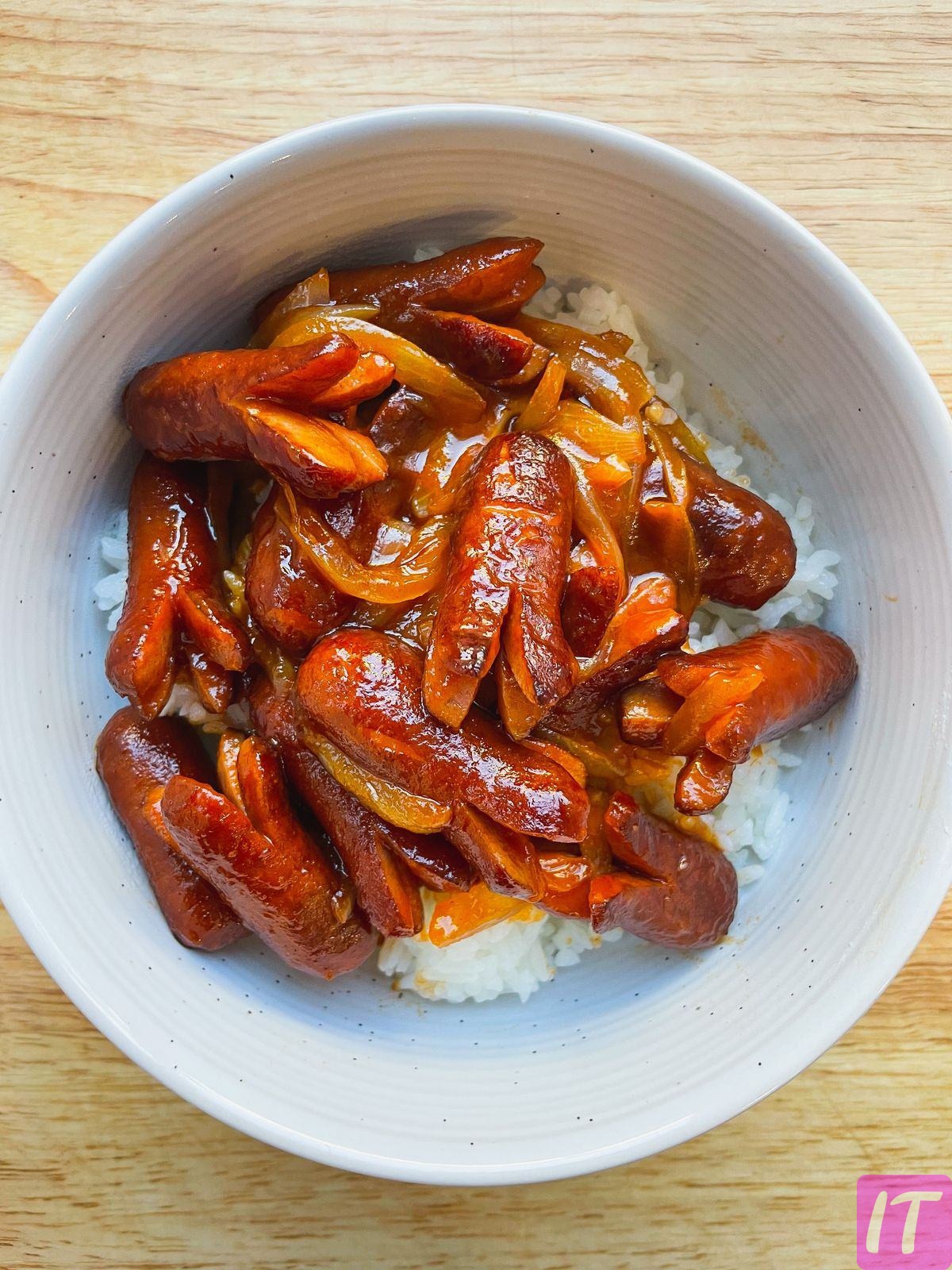ITEACH.TOP | LEARN EVERYTHING
How to Make Italian Pizza
Italian pizza is a culinary masterpiece that has transcended its humble origins to become a global favorite. From its crispy crust to its savory toppings, every element of an Italian pizza is meticulously crafted to create a harmonious blend of flavors and textures. This article delves into the intricate process of making authentic Italian pizza, covering everything from its historical roots to the science behind its preparation.
Understanding the History of Italian Pizza
The history of Italian pizza is as rich and diverse as the flavors it embodies. Originating in Naples, Italy, pizza can be traced back to the 18th century when it was first created as a simple, affordable meal for the working class. The term “pizza” itself is believed to have derived from the Latin word “pinsa,” meaning flatbread. Early pizzas were topped with basic ingredients such as garlic, lard, and salt, reflecting the limited resources of the time.
As pizza gained popularity, it began to evolve. The introduction of tomatoes from the New World in the 16th century was a game-changer, leading to the creation of the classic Margherita pizza in honor of Queen Margherita of Savoy. This iconic pizza, topped with tomatoes, mozzarella cheese, and basil, symbolized the colors of the Italian flag and solidified pizza’s status as a national dish.
The 20th century saw the globalization of pizza, with Italian immigrants introducing it to the United States and other parts of the world. Today, pizza is enjoyed in countless variations, but the essence of Italian pizza remains rooted in its traditional preparation methods and high-quality ingredients.
Essential Ingredients for Authentic Italian Pizza
Creating an authentic Italian pizza requires a careful selection of ingredients. The foundation of any great pizza is its dough, which consists of flour, water, yeast, and salt. The choice of flour is crucial, with “00” flour being the preferred type for its fine texture and high protein content, which contributes to a light and airy crust.
Water quality also plays a significant role; soft water with low mineral content is ideal for achieving the perfect dough consistency. Yeast, whether fresh or dry, is essential for fermentation, while salt enhances flavor and strengthens the dough structure.
The toppings of an Italian pizza are equally important. Fresh, high-quality tomatoes are used to create a vibrant sauce, while mozzarella cheese provides a creamy, melt-in-your-mouth texture. Traditional toppings include fresh basil, extra virgin olive oil, and a variety of cured meats and vegetables, all of which contribute to the pizza’s complex flavor profile.

Selecting the Best Flour for Pizza Dough
The choice of flour is a critical aspect of making authentic Italian pizza. “00” flour, also known as doppio zero, is the gold standard for pizza dough. This finely milled flour has a high protein content, typically around 11-12%, which is essential for developing gluten. Gluten provides the dough with elasticity and strength, allowing it to stretch without tearing.
“00” flour’s fine texture also contributes to a smooth, tender dough that bakes into a light and crispy crust. While other types of flour, such as all-purpose or bread flour, can be used, they may not yield the same results. Bread flour, for example, has a higher protein content, which can result in a chewier crust.
When selecting flour, it’s important to consider its freshness. Flour that has been stored for too long can lose its potency, affecting the dough’s rise and texture. For the best results, use freshly milled “00” flour and store it in a cool, dry place to maintain its quality.
Mastering the Art of Pizza Dough Preparation
The preparation of pizza dough is a meticulous process that requires attention to detail. Begin by combining the flour and water in a mixing bowl, using a ratio of approximately 60% hydration. This means that for every 100 grams of flour, you’ll need 60 grams of water. Mix the ingredients until they form a shaggy dough, then let it rest for 20-30 minutes. This resting period, known as autolyse, allows the flour to fully hydrate and makes the dough easier to knead.
After the autolyse, add the yeast and salt to the dough. It’s important to keep the yeast and salt separate initially, as salt can inhibit yeast activity. Mix the dough thoroughly until the ingredients are fully incorporated. At this stage, the dough will be sticky and difficult to handle, but with proper kneading, it will become smooth and elastic.
The Role of Yeast in Pizza Dough Fermentation
Yeast is a crucial component in pizza dough fermentation, responsible for leavening the dough and developing its flavor. There are two main types of yeast used in pizza dough: fresh yeast and dry yeast. Fresh yeast, also known as cake yeast, is highly perishable and must be stored in the refrigerator. It has a short shelf life but provides a more robust flavor. Dry yeast, on the other hand, is more convenient and has a longer shelf life. It comes in two forms: active dry yeast and instant yeast. Active dry yeast needs to be dissolved in water before use, while instant yeast can be mixed directly into the flour.
During fermentation, yeast consumes the sugars in the flour and produces carbon dioxide and alcohol. The carbon dioxide creates air pockets in the dough, causing it to rise and become light and airy. The alcohol, along with other byproducts of fermentation, contributes to the dough’s complex flavor. The fermentation process also develops gluten, giving the dough its elasticity and strength.
Techniques for Kneading Pizza Dough to Perfection
Kneading is a critical step in pizza dough preparation, as it develops the gluten network that gives the dough its structure and elasticity. Begin by lightly flouring a clean work surface and transferring the dough onto it. Use the heel of your hand to push the dough away from you, then fold it back over itself. Rotate the dough slightly and repeat the process, using a rhythmic motion to stretch and fold the dough.
Continue kneading for 10-15 minutes, or until the dough becomes smooth and elastic. To test if the dough is ready, perform the windowpane test: take a small piece of dough and stretch it gently between your fingers. If it forms a thin, translucent membrane without tearing, the gluten is well-developed, and the dough is ready for the next step.
The Importance of Dough Resting and Proofing
Resting and proofing are essential steps in pizza dough preparation, allowing the dough to relax and develop its flavor. After kneading, let the dough rest for 10-15 minutes. This short rest period allows the gluten to relax, making the dough easier to shape.
The next step is bulk fermentation, also known as the first rise. Place the dough in a lightly oiled bowl, cover it with a damp cloth or plastic wrap, and let it rise at room temperature for 1-2 hours, or until it has doubled in size. During this time, the yeast will continue to ferment, producing carbon dioxide and developing the dough’s flavor.
After the first rise, gently deflate the dough and divide it into individual portions. Shape each portion into a ball, cover with a damp cloth, and let them proof for another 30-60 minutes. This final proofing stage allows the dough to relax and makes it easier to stretch into a pizza base.
Crafting the Perfect Pizza Sauce
The pizza sauce is a vital component of an authentic Italian pizza, providing a flavorful base for the toppings. Traditional Italian pizza sauce is made from simple, high-quality ingredients, allowing the natural flavors to shine. Start with fresh, ripe tomatoes, preferably San Marzano tomatoes, known for their sweet, rich flavor and low acidity.
To prepare the sauce, blanch the tomatoes in boiling water for 30 seconds, then transfer them to an ice bath to stop the cooking process. Peel the tomatoes and remove the seeds, then crush them by hand or use a food mill to create a smooth sauce. Add a pinch of salt, a drizzle of extra virgin olive oil, and a few torn basil leaves for flavor. Avoid cooking the sauce, as this can alter the fresh, vibrant taste of the tomatoes.
Choosing the Right Cheese for Italian Pizza
Mozzarella cheese is the quintessential choice for Italian pizza, known for its creamy texture and excellent melting properties. Fresh mozzarella, made from cow’s milk or buffalo milk, is the preferred option for its delicate flavor and soft, moist texture. When using fresh mozzarella, it’s important to drain and pat it dry to prevent excess moisture from making the pizza soggy.
In addition to mozzarella, other cheeses can be used to enhance the flavor of the pizza. Parmigiano-Reggiano, a hard, aged cheese, adds a sharp, nutty flavor when grated over the pizza. Pecorino Romano, made from sheep’s milk, provides a salty, tangy taste. For a more complex flavor profile, consider blending different cheeses, such as provolone, fontina, or gorgonzola, with mozzarella.

Exploring Traditional Italian Pizza Toppings
Traditional Italian pizza toppings are characterized by their simplicity and high quality. The classic Margherita pizza, for example, features just three toppings: fresh tomatoes, mozzarella cheese, and basil. This minimalist approach allows the natural flavors of the ingredients to shine.
Other traditional toppings include cured meats such as prosciutto, salami, and pancetta, which add a savory, umami flavor to the pizza. Vegetables, such as artichokes, mushrooms, and bell peppers, provide a fresh, vibrant contrast. Olives, capers, and anchovies add a briny, salty taste that complements the other toppings.
When selecting toppings, it’s important to strike a balance between flavors and textures. Avoid overloading the pizza with too many ingredients, as this can result in a soggy crust and muddled flavors. Instead, focus on a few high-quality toppings that complement each other and enhance the overall taste of the pizza.
The Science Behind Baking Pizza in a Wood-Fired Oven
Baking pizza in a wood-fired oven is a time-honored tradition in Italy, known for producing a unique flavor and texture that is difficult to replicate with other methods. The high temperatures of a wood-fired oven, typically ranging from 800 to 900 degrees Fahrenheit, cook the pizza quickly, resulting in a crispy crust with a slight char and a tender, airy interior.
The radiant heat from the wood fire and the conductive heat from the oven floor create a perfect environment for baking pizza. The intense heat causes the water in the dough to evaporate rapidly, creating steam that puffs up the crust. The high temperatures also caramelize the sugars in the dough and toppings, enhancing the flavor and creating a beautiful, golden-brown color.
In addition to the heat, the wood used in the oven contributes to the pizza’s flavor. Hardwoods, such as oak, hickory, and cherry, are preferred for their dense, slow-burning properties and aromatic smoke. The type of wood used can impart subtle smoky notes to the pizza, adding depth and complexity to its taste.
Alternative Baking Methods for Homemade Pizza
While a wood-fired oven is ideal for baking pizza, there are alternative methods that can produce excellent results at home. A pizza stone, for example, can mimic the conductive heat of a wood-fired oven. Preheat the stone in a conventional oven at the highest temperature setting for at least 30 minutes before baking the pizza. The hot stone will help achieve a crispy crust and even cooking.
Another option is a cast-iron skillet, which can be used to cook pizza on the stovetop and finish it under the broiler. Heat the skillet over medium-high heat, add the stretched dough, and cook for 2-3 minutes until the bottom is golden brown. Transfer the skillet to the broiler and cook for an additional 2-3 minutes until the cheese is melted and bubbly.
For those without a pizza stone or cast-iron skillet, a baking sheet can also be used. Preheat the baking sheet in the oven and carefully transfer the pizza onto the hot surface. While this method may not achieve the same level of crispiness as a pizza stone or skillet, it can still produce a delicious homemade pizza.
Achieving the Ideal Pizza Crust Texture
The texture of the pizza crust is a key factor in its overall quality, and achieving the ideal texture requires attention to detail throughout the dough preparation and baking process. The crust should be crispy on the outside, with a slight char, and tender and airy on the inside.
To achieve this texture, start with a well-hydrated dough, as higher hydration levels can create a lighter, airier crust. Proper kneading and fermentation are also essential for developing the gluten network and flavor. When stretching the dough, handle it gently to preserve the air bubbles created during fermentation.
Baking at high temperatures is crucial for achieving a crispy crust. Whether using a wood-fired oven, pizza stone, or other methods, ensure the baking surface is preheated and the oven is at its highest setting. Bake the pizza quickly to avoid drying out the crust, and monitor it closely to prevent burning.
Balancing Flavors in Italian Pizza
Balancing flavors is an essential aspect of crafting an authentic Italian pizza. The goal is to create a harmonious blend of tastes that complement each other without overwhelming the palate. Start with a well-seasoned dough, using the right amount of salt to enhance the overall flavor.
The pizza sauce should be fresh and vibrant, with a balance of sweetness from the tomatoes and a hint of acidity. Avoid over-seasoning the sauce, as the natural flavors of the tomatoes should be the star. When adding cheese, use a combination of fresh mozzarella and aged cheeses like Parmigiano-Reggiano or Pecorino Romano for a balanced taste.
Toppings should be chosen carefully to complement each other. Fresh herbs like basil and oregano add a fragrant note, while cured meats and vegetables provide savory and sweet contrasts. A drizzle of extra virgin olive oil before baking can enhance the flavors and add a rich, fruity taste.
The Impact of Olive Oil on Pizza Dough Quality
Olive oil is a key ingredient in pizza dough, contributing to its flavor, texture, and overall quality. Extra virgin olive oil, known for its rich, fruity taste and high-quality properties, is the preferred choice for authentic Italian pizza.
Adding olive oil to the dough can improve its texture by making it more tender and less prone to tearing. The oil coats the flour particles, reducing gluten formation and creating a softer, more pliable dough. It also helps to create a crispy crust by promoting browning during baking.
In addition to its impact on texture, olive oil enhances the flavor of the dough. Its fruity, slightly peppery taste complements the other ingredients and adds depth to the overall flavor profile. A drizzle of olive oil on the pizza before baking can also enhance the taste and create a beautiful, golden-brown crust.
Understanding the Role of Temperature in Pizza Baking
Temperature is a critical factor in pizza baking, affecting the texture, flavor, and overall quality of the pizza. High temperatures are essential for achieving a crispy crust and properly cooked toppings. In a wood-fired oven, temperatures typically range from 800 to 900 degrees Fahrenheit, allowing the pizza to cook in just 60-90 seconds.
For home ovens, the highest temperature setting, usually around 500-550 degrees Fahrenheit, is recommended. Preheating the oven and baking surface, such as a pizza stone or baking sheet, is crucial for achieving the desired results. The hot surface helps to create a crispy crust by promoting rapid evaporation of moisture and even cooking.
Monitoring the pizza during baking is essential to prevent burning and ensure even cooking. Rotate the pizza if necessary to avoid hot spots, and use visual cues, such as the color of the crust and the bubbling of the cheese, to determine when it’s done.

Techniques for Stretching Pizza Dough Evenly
Stretching pizza dough evenly is a skill that requires practice and patience. Start by placing the proofed dough on a lightly floured surface and gently pressing it with your fingertips to create a small disc. Avoid using a rolling pin, as this can deflate the dough and result in a dense crust.
Once the dough is flattened, use your hands to stretch it further. Place your hands under the dough, with your knuckles supporting it, and gently pull and stretch the dough outward. Rotate the dough as you stretch to maintain an even thickness. Be careful not to stretch the dough too thin, especially in the center, as this can lead to holes.
For a more advanced technique, try the “slap and stretch” method. Hold the dough with both hands, lift it, and slap it down onto the work surface while simultaneously stretching it. This method requires practice but can create a perfectly even pizza base.
Tips for Preventing Soggy Pizza Crust
A soggy pizza crust can be a common issue, but there are several techniques to prevent it and achieve a crispy, well-cooked base. Start with a well-hydrated dough, as higher hydration levels can create a lighter, airier crust that is less prone to sogginess.
When preparing the pizza sauce, avoid using too much liquid. Fresh tomatoes can be naturally watery, so consider draining excess liquid or using a thicker sauce. Pat dry any toppings that contain moisture, such as fresh mozzarella or vegetables, to prevent them from releasing water during baking.
Preheating the baking surface, whether a pizza stone, cast-iron skillet, or baking sheet, is crucial for achieving a crispy crust. The hot surface helps to evaporate moisture quickly and create a firm base. Baking at high temperatures also ensures that the pizza cooks quickly and evenly, reducing the risk of a soggy crust.
Pairing Italian Pizza with Complementary Wines
Pairing Italian pizza with the right wine can elevate the dining experience and enhance the flavors of both the food and the drink. The key is to choose a wine that complements the toppings and overall flavor profile of the pizza.
For a classic Margherita pizza, a light, acidic red wine such as Chianti or Barbera is an excellent choice. The bright acidity of the wine complements the fresh tomatoes and cuts through the richness of the mozzarella cheese. For pizzas with cured meats, such as prosciutto or salami, a robust red wine like Sangiovese or Montepulciano can balance the savory, umami flavors.
White wines can also pair well with certain types of pizza. A crisp, dry white wine like Pinot Grigio or Vermentino can complement pizzas with seafood or vegetable toppings. For a richer, creamier pizza, such as one with a white sauce or multiple cheeses, a fuller-bodied white wine like Chardonnay can enhance the flavors.
Exploring Regional Variations of Italian Pizza
Italian pizza is not a monolithic dish; it varies significantly across different regions of Italy, each with its unique characteristics and flavors. Neapolitan pizza, originating from Naples, is perhaps the most famous, known for its soft, chewy crust and simple toppings like tomatoes, mozzarella, and basil.
In Rome, the pizza is thinner and crispier, often baked in rectangular pans and sold by the slice. Roman pizza, or “pizza al taglio,” features a variety of toppings, from classic Margherita to more adventurous combinations like potatoes and rosemary or zucchini flowers.
Sicilian pizza, or “sfincione,” is another regional variation, characterized by its thick, spongy crust and robust toppings. Traditional Sicilian pizza often includes a rich tomato sauce, onions, anchovies, and grated cheese, creating a hearty and flavorful dish.
Each region’s unique approach to pizza reflects its local ingredients, culinary traditions, and cultural influences, showcasing the diversity and richness of Italian cuisine.
In conclusion, making authentic Italian pizza is an art that requires attention to detail, high-quality ingredients, and a deep understanding of the traditional techniques. From selecting the right flour and mastering the dough preparation to crafting the perfect sauce and choosing



